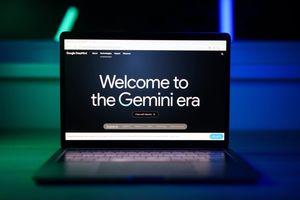The Gen Z Perspective: Why events like US SIF help transform sustainable investing

By Natasha Gibson and Maddy Forlenza
For all the progress made in digital finance, virtual climate data and more, there’s still one irreplaceable thing that always hits different for Gen Z: showing up. The latest topic of discussion at Equities.com over the past few weeks has been US SIF: The Sustainable Investment Forum.
This year, professionals and organizations involved in sustainable investing convened in Washington to discuss a range of topics, including the misuse of terminology and the political backlash against ESG. These sessions aren’t just about celebrating wins, but about defining the next set of standards for the future landscape.
In an era where ESG has become a contentious term, this event serves as a reminder that accountability and progress are truly transformed through genuine conversations. Naturally, it’s easy to forget the power of in-person conversations given the digital age we’re living in. And this forum doesn’t just recap where sustainable investing is today, but it helps shape where it’s going tomorrow.
Having policymakers, asset managers, wealth advisors and investors in the same room asking uncomfortable questions and building momentum is a great place to foster these conversations. More people, especially young investors, should be aware of these efforts.
Social media has been the primary platform where ideas go viral, but convenings like US SIF are where these ideas are developed and refined. That’s why they still matter. Even in 2025, transformation starts with showing up.
To take this further, I teamed up with Natasha Gibson, VP of Marketing at Equities.com, who attended the event. Below, Natasha shares her experience and what she learned at US SIF:
What the US SIF Forum really taught us
This year’s US SIF Forum brought together a cross-section of the investment industry — advisors, asset managers, institutional leaders, policy experts — each exploring how capital can be deployed more thoughtfully.
And this year, a common thread ran through hallway conversations: if we want more investors to connect with this work, the way we talk about it — and teach it — needs to change.
We’re still framing this as all-or-nothing
One issue that came up again and again: in the broader advisor landscape, there’s still a tendency to frame this space in extremes. Either you build portfolios entirely around social and environmental themes or you’re not “that kind of advisor.”
That binary framing doesn’t reflect reality. Most investors aren’t asking for all-or-nothing portfolios. They’re asking questions. They want their money to reflect certain values or avoid specific exposures. They want to understand trade-offs — not choose a side.
The advisors doing this well know how to meet clients in that middle ground. But the broader industry, and the way it’s being trained and messaged, hasn’t made much space for that nuance.
The language is getting in the way
A major pain point raised at the forum: across the financial industry, there’s a growing tendency to use terms like “sustainable investing,” “impact,” “values-based,” “faith-aligned,” and others as if they’re interchangeable.
They’re not.
Each of these approaches carries its own intent and framework. But when professionals and firms treat them like synonyms, it creates confusion — not just for clients, but also for the advisors trying to guide them.
This misuse of terminology is a symptom of a larger issue: there’s no centralized way to define these terms within the industry. Without clarity, the entire space becomes harder to navigate, harder to explain and harder to trust.
No shared standards, no signal of credibility
The lack of precise language reflects an even deeper gap — there’s no formal certification or designation that signals an advisor is trained and qualified to lead these conversations well. No baseline curriculum. No credential that helps investors know, “This person understands how to align financial strategy with personal priorities in a thoughtful, informed way.”
So where’s the line? At what point can an advisor claim they specialize in this work?
Right now, it’s anyone’s guess. That opens the door to misrepresentation, unintentional overpromising and, in some cases, greenwashing. It also makes it harder for the advisors who are doing the work right to stand apart.
The message still isn’t landing, especially for Gen Z
The way this space is being communicated — by firms, by institutions, even sometimes within this forum — still feels disconnected from how most investors actually talk or think about their money.
Especially with the next generation of investors. Millennials and Gen Z don’t need to be convinced that their money has influence. They already expect that. What they need is a message that speaks to them — clearly, without jargon and in terms that reflect how they see the world.
If we’re still using outdated, institutional language, we’re not just missing the mark. We’re missing the moment.
We have the data. But we’re still losing the narrative
Perhaps the most frustrating insight from the Forum: the research is there. Portfolios that reflect broader social and environmental factors can perform as well — or better — than traditional ones. They often carry lower long-term risk. There are measurable outcomes.
But none of that matters if the public doesn’t believe it.
Right now, many investors — and advisors — are still taking their cues from headlines and politics. Not from performance data or real-world case studies. That’s not going to change with another white paper. It’s going to change with better storytelling and better framing.
Where we go from here
The US SIF Forum surfaced a collective realization: we need to evolve the infrastructure around this kind of investing — not just the products and research, but the words we use, the training we require and the signals we send.
- We need clearer, more consistent terminology that respects the distinctions between different approaches
- We need formal education pathways and certifications for advisors doing this work
- We need messaging that resonates with modern investors — not just industry insiders
- And we need to close the gap between the data we have and the public narrative that surrounds it
This isn’t about creating a new niche. It’s about redefining how we talk about investing with intention — and making it easier for more people to see themselves in the process.
That’s where the opportunity lies. And that’s exactly the kind of conversation Equities.com is here to help lead.
More of The Gen Z Perspective: Young investors will hold companies to account on diversity
More News
View More




Recent Quotes
View More
Quotes delayed at least 20 minutes.
By accessing this page, you agree to the Privacy Policy and Terms Of Service.